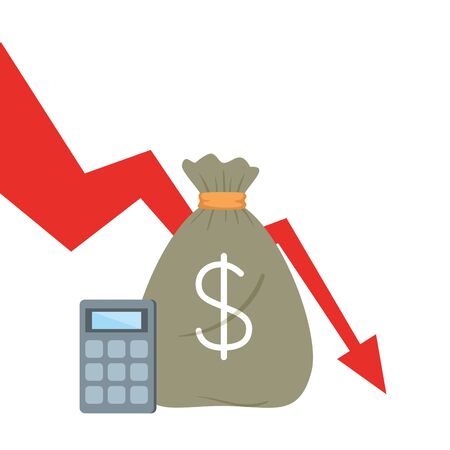1. Understanding Required Minimum Distributions (RMDs)
Required Minimum Distributions (RMDs) are the minimum amounts that retirees must withdraw annually from their retirement accounts once they reach a certain age. These withdrawals are mandated by the IRS to ensure that individuals do not defer taxes on their retirement savings indefinitely.
What Are RMDs?
An RMD is the amount you must withdraw each year from specific types of retirement accounts after reaching the required starting age. The goal of these distributions is to gradually deplete tax-advantaged retirement savings over time, ensuring they are used for their intended purpose—funding retirement.
Why Do RMDs Exist?
The primary reason for RMDs is taxation. Many retirement accounts, such as traditional IRAs and 401(k)s, allow tax-deferred growth. However, the government requires account holders to begin withdrawing funds and paying taxes on them at a certain point, preventing indefinite tax deferral.
Which Accounts Are Subject to RMDs?
Not all retirement accounts require RMDs. The table below outlines which accounts are subject to these mandatory withdrawals:
| Retirement Account Type | Subject to RMDs? |
|---|---|
| Traditional IRA | Yes |
| Rollover IRA | Yes |
| SIMPLE IRA | Yes |
| SEP IRA | Yes |
| 401(k) (former employer) | Yes |
| 403(b) | Yes |
| 457(b) | Yes |
| Roth IRA | No (during account holder’s lifetime) |
| Roth 401(k) | Yes (unless rolled into a Roth IRA) |
When Do You Need to Start Taking RMDs?
The starting age for RMDs depends on when you were born:
- If you were born before July 1, 1949: Your first RMD was due at age 70½.
- If you were born between July 1, 1949, and December 31, 1950: Your first RMD was due at age 72.
- If you were born in 1951 or later: Your first RMD is due at age 73.
Your first RMD must be taken by April 1 of the year following the year you reach your required starting age. After that, annual RMDs must be withdrawn by December 31 each year.
2. How to Calculate Your RMDs
Calculating your Required Minimum Distributions (RMDs) is essential to ensure compliance with IRS regulations and avoid costly penalties. Follow this step-by-step guide to determine your RMDs using the IRS life expectancy tables and your account balances.
(1) Determine Your Account Balance
Your RMD calculation starts with identifying the total balance of your retirement accounts as of December 31 of the previous year. This includes traditional IRAs, 401(k)s, and other tax-deferred retirement accounts.
(2) Find Your Distribution Factor
The IRS provides life expectancy tables to determine the distribution period based on your age. The most commonly used table is the Uniform Lifetime Table, but there are also the Joint and Last Survivor Table and the Single Life Expectancy Table for specific cases.
Uniform Lifetime Table (Excerpt)
| Age | Distribution Factor |
|---|---|
| 72 | 27.4 |
| 73 | 26.5 |
| 74 | 25.5 |
| 75 | 24.6 |
| 76 | 23.7 |
(3) Calculate Your RMD Amount
Once you have your prior year-end account balance and distribution factor, apply this simple formula:
RMD Formula:
RMD = Prior Year-End Account Balance ÷ Distribution Factor
For example, if you are 75 years old and your IRA balance was $500,000 at the end of last year:
- Your distribution factor (from the table) is 24.6.
- $500,000 ÷ 24.6 = $20,325.20.
- You must withdraw at least $20,325.20 for the year.
(4) Withdraw Your RMD by the Deadline
The deadline for taking your annual RMD is December 31 each year. However, for your first RMD (if you just turned 72), you may delay it until April 1 of the following year. Keep in mind that delaying your first RMD means taking two distributions in one year, which could impact your tax liability.
(5) Consider Tax Implications
Your RMD amount is taxed as ordinary income. Ensure you understand how withdrawals will affect your taxable income and consider consulting a financial advisor to optimize tax strategies.

3. When and How to Take Your RMDs
Key Deadlines for Taking Your RMDs
Understanding the deadlines for your Required Minimum Distributions (RMDs) is crucial to avoid penalties. Missing an RMD deadline can result in a hefty 25% excise tax on the amount you failed to withdraw.
(1) First RMD Deadline
If you are taking your first RMD, you have until April 1 of the year following the year you turn 73. However, delaying your first withdrawal means you’ll need to take two RMDs in one year, which could increase your taxable income.
(2) Annual RMD Deadline
After your first RMD, all subsequent RMDs must be taken by December 31 each year. Failing to do so will trigger penalties.
Distribution Methods for Your RMDs
You have several options when it comes to withdrawing your RMDs. Choosing the right method can help you manage taxes and maintain your retirement savings.
(1) Lump-Sum Withdrawal
You can take your entire RMD in one lump sum. This is simple but could push you into a higher tax bracket.
(2) Monthly or Quarterly Withdrawals
Spreading out your RMDs over the year can help manage cash flow and potentially reduce tax impact.
(3) In-Kind Distributions
Instead of cash, you can take your RMD as stocks or other assets, allowing continued growth potential while satisfying IRS requirements.
Tax Considerations for Your RMDs
Your RMDs are generally taxed as ordinary income, meaning they are subject to federal and possibly state taxes. Here’s what you need to consider:
| Consideration | Details |
|---|---|
| Federal Taxes | Your withdrawals are taxed based on your income tax bracket. |
| State Taxes | Some states do not tax retirement distributions, while others do. |
| Withholding Option | You can elect to have taxes withheld from your distribution to avoid a large tax bill at year-end. |
| Qualified Charitable Distributions (QCDs) | If youre 70½ or older, donating up to $100,000 per year directly to a charity can satisfy your RMD requirement while reducing taxable income. |
By understanding these key deadlines, distribution methods, and tax implications, you can make informed decisions about how to handle your Required Minimum Distributions effectively.
4. Common Mistakes to Avoid with RMDs
Understanding Required Minimum Distributions (RMDs) is essential for managing your retirement savings effectively. However, many people make costly mistakes that can lead to penalties and unnecessary tax burdens. Here are some common errors to watch out for:
(1) Missing the RMD Deadline
The IRS requires you to take your first RMD by April 1 of the year after you turn 73 (as of 2023). For all subsequent years, the deadline is December 31. Missing these deadlines can result in a hefty penalty—50% of the amount you should have withdrawn.
(2) Miscalculating Your RMD Amount
Your RMD is calculated based on your account balance as of December 31 of the previous year and the IRS life expectancy factor. A miscalculation can lead to withdrawing too little or too much, both of which can have financial consequences.
How to Calculate RMD Correctly:
| Step | Description |
|---|---|
| (1) | Find your prior years December 31 account balance. |
| (2) | Look up your life expectancy factor from the IRS Uniform Lifetime Table. |
| (3) | Divide your account balance by the life expectancy factor. |
(3) Withdrawing from the Wrong Account
If you have multiple retirement accounts, such as IRAs and 401(k)s, its important to know that RMD rules differ between them. While IRA RMDs can be aggregated and taken from one or multiple IRA accounts, each 401(k) requires a separate withdrawal.
(4) Ignoring Tax Implications
Your RMD withdrawals count as taxable income and may push you into a higher tax bracket. Failing to plan for taxes can result in an unexpectedly high bill at tax time.
Ways to Minimize Tax Impact:
- Consider spreading withdrawals throughout the year instead of taking a lump sum.
- Use Qualified Charitable Distributions (QCDs) if youre eligible, which allow direct donations from your IRA to charity without incurring taxes.
- Work with a financial advisor to optimize your withdrawal strategy.
(5) Failing to Update Beneficiary Information
If your beneficiary information is outdated, it could complicate the distribution process after your passing. Regularly review and update your beneficiaries to ensure that your assets go to the intended recipients smoothly.
5. Strategies to Reduce RMD Tax Impact
Required Minimum Distributions (RMDs) can significantly increase your taxable income, potentially pushing you into a higher tax bracket. Fortunately, there are several strategies to help minimize the tax impact of your RMDs. Below, we explore some of the most effective ways to manage your distributions wisely.
Roth Conversions
Converting a portion of your traditional IRA or 401(k) into a Roth IRA can be an effective way to reduce future RMDs. Roth IRAs are not subject to RMD rules during the account owners lifetime, allowing for tax-free growth.
Key Benefits of Roth Conversions
- No RMDs: Once funds are in a Roth IRA, you won’t need to take required distributions.
- Tax-Free Growth: Qualified withdrawals from a Roth IRA are tax-free.
- Estate Planning Advantage: Heirs can inherit Roth IRAs with tax-free withdrawals under certain conditions.
Things to Consider Before Converting
- Upfront Taxes: The amount converted is subject to ordinary income tax.
- TIMING MATTERS: Spreading conversions over multiple years may help manage tax brackets.
Qualified Charitable Distributions (QCDs)
If youre charitably inclined, making Qualified Charitable Distributions (QCDs) directly from your IRA can help reduce taxable income while supporting causes you care about.
How QCDs Work
- You must be at least 70½ years old to make a QCD.
- Funds go directly from your IRA to a qualified charity.
- The amount donated (up to $100,000 per year) is excluded from taxable income and counts toward your RMD requirement.
Delaying Retirement Account Withdrawals
If you’re still working past age 73 and have a 401(k) with your current employer, you may be able to delay RMDs for that specific account.
The “Still Working” Exception
- Applies only to employer-sponsored plans like 401(k)s (not IRAs).
- You must own less than 5% of the company.
- Delays RMDs until retirement, allowing more time for tax planning.
Annuities and Other Tax-Advantaged Options
Certain annuities and investment strategies can also help manage RMD obligations effectively.
| Strategy | Description | Main Benefit |
|---|---|---|
| Qualified Longevity Annuity Contract (QLAC) | A deferred annuity that allows you to exclude up to $200,000 from RMD calculations until age 85. | Lowers taxable RMD amounts in earlier years. |
| Diversified Withdrawal Strategy | A mix of taxable, tax-deferred, and tax-free accounts helps control overall tax liability. | Smooths out tax burdens over retirement years. |
The Importance of Planning Ahead
The sooner you start planning for RMDs, the more flexibility youll have in managing their impact on your taxes. By considering Roth conversions, QCDs, and other strategic moves, you can optimize your retirement withdrawals while minimizing unnecessary tax burdens.


